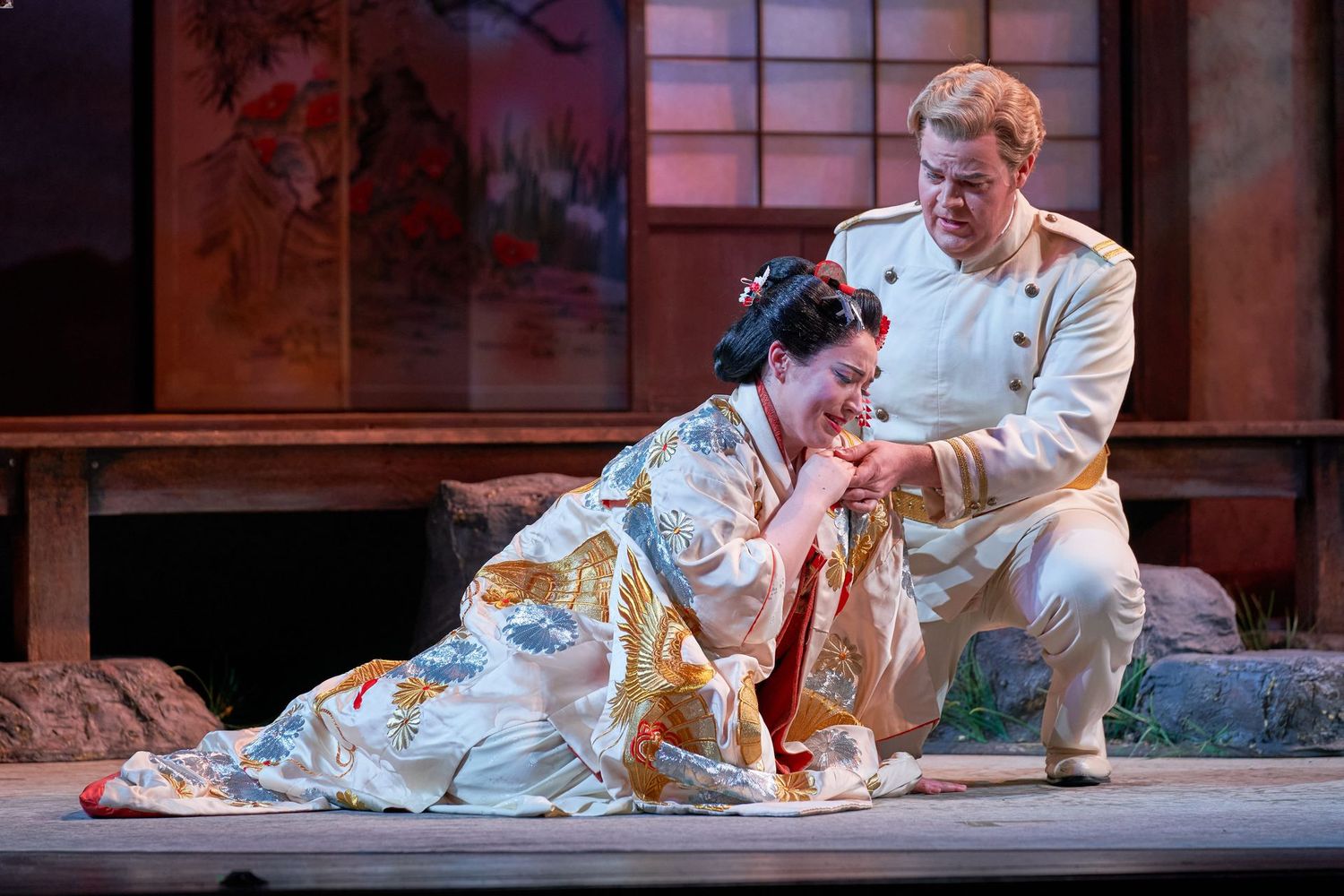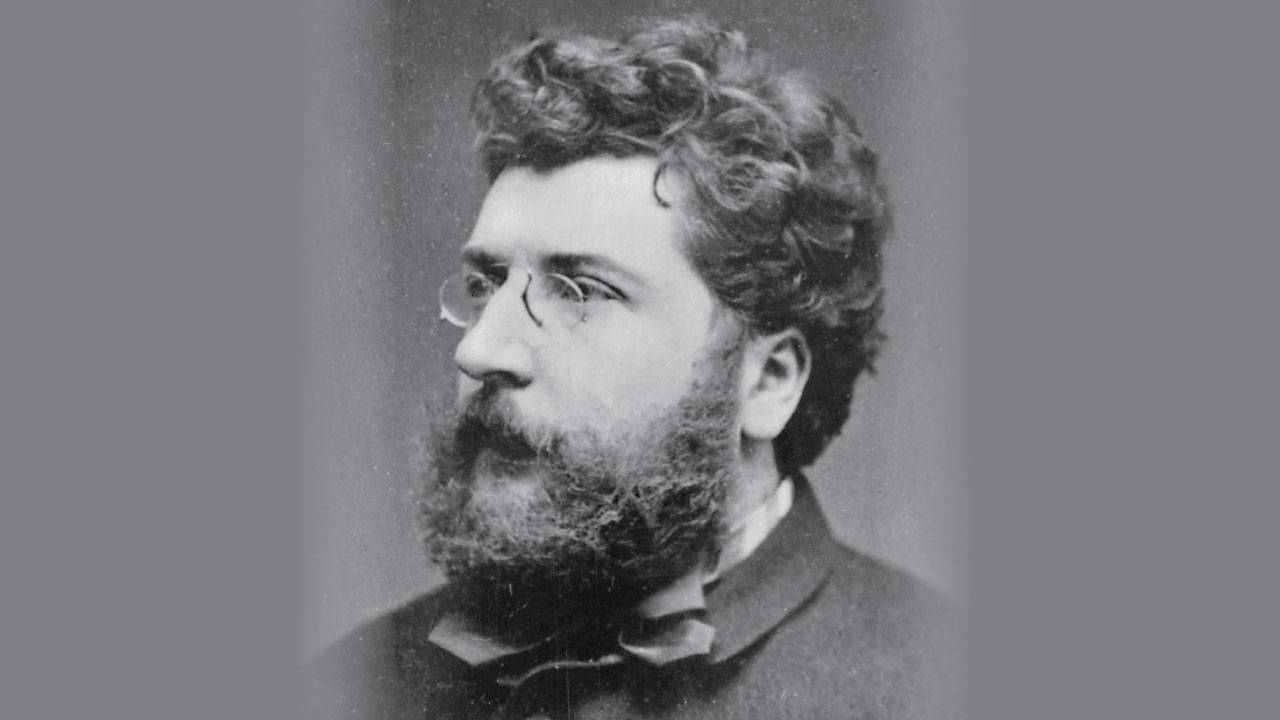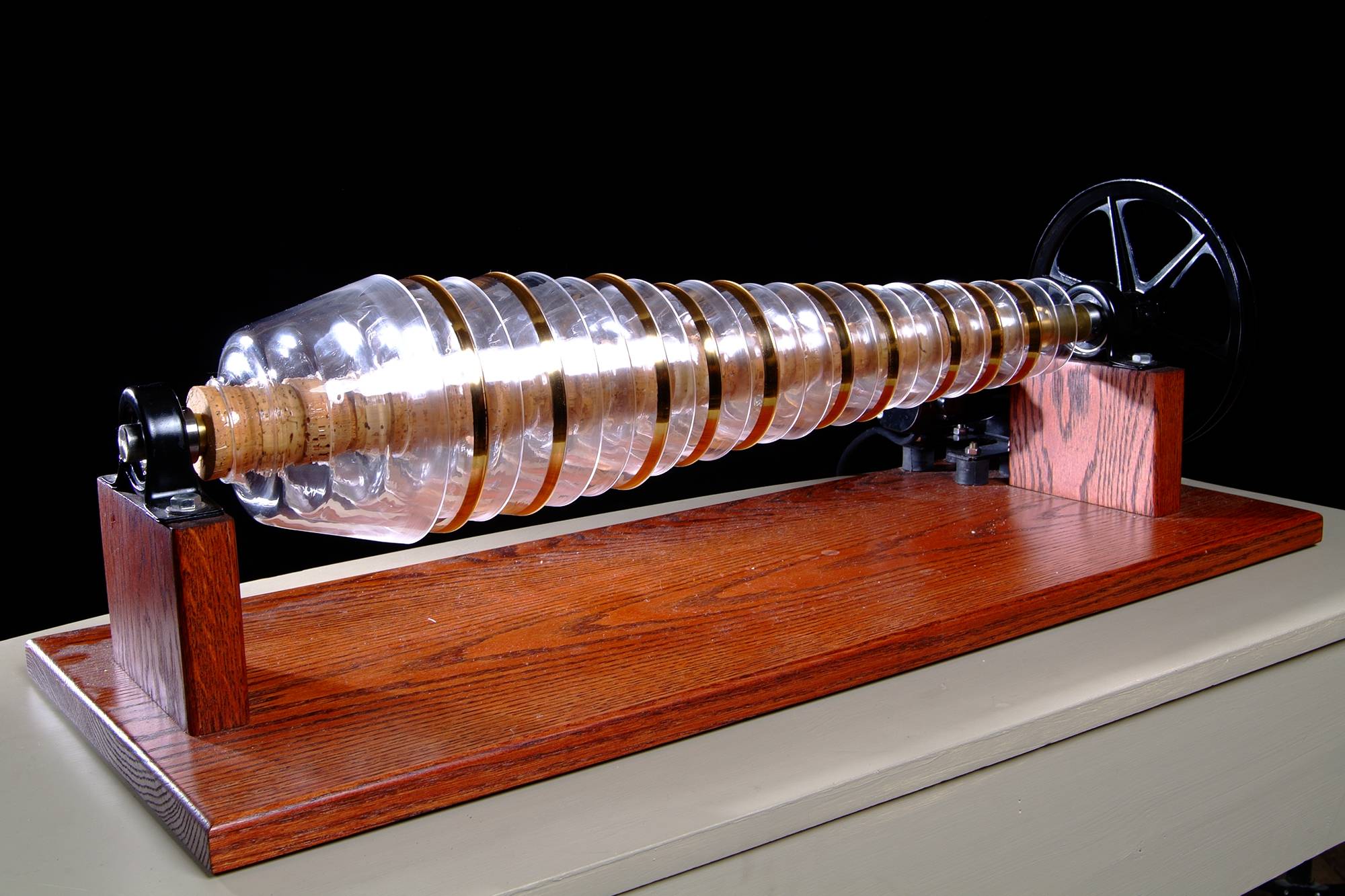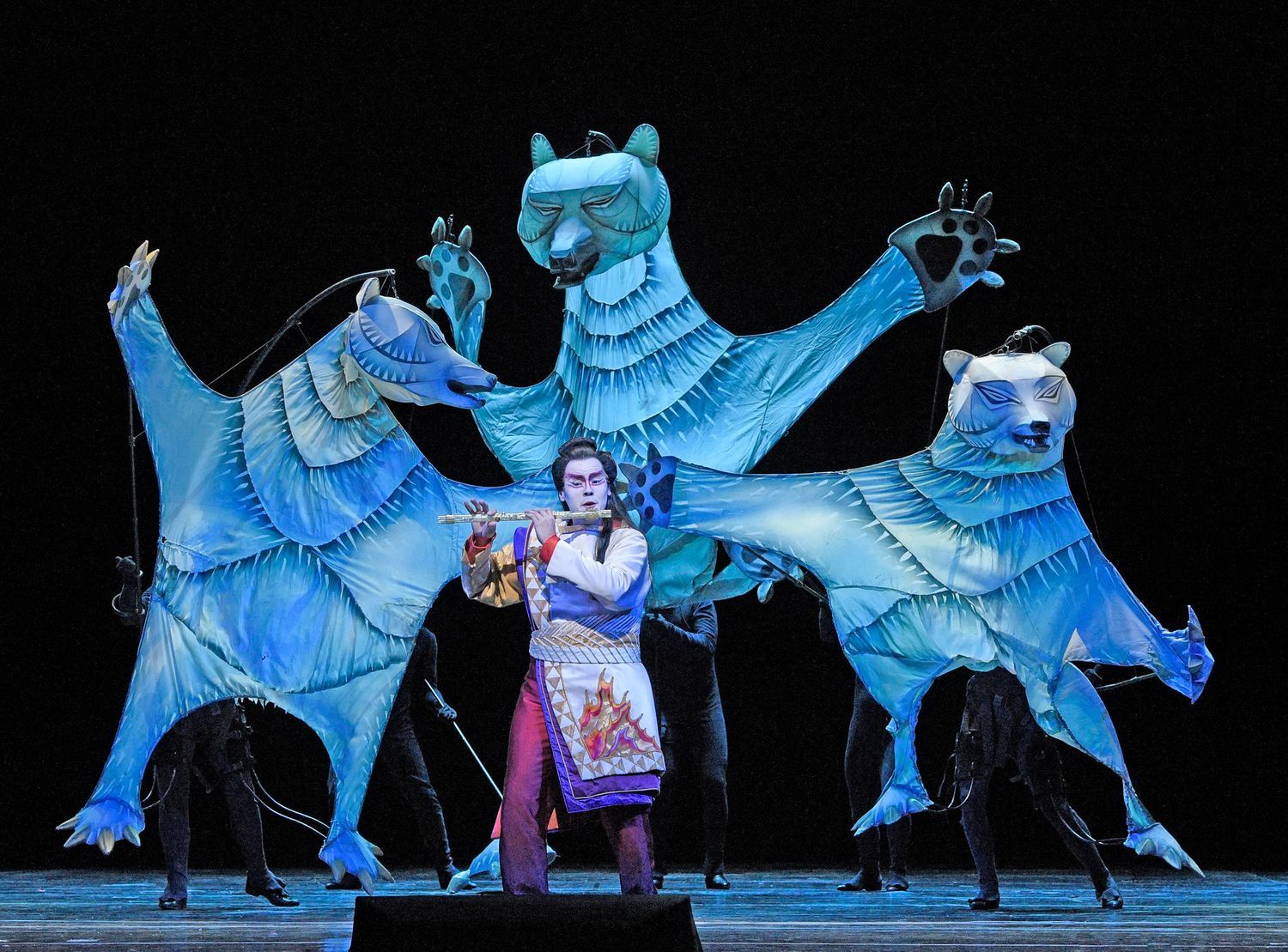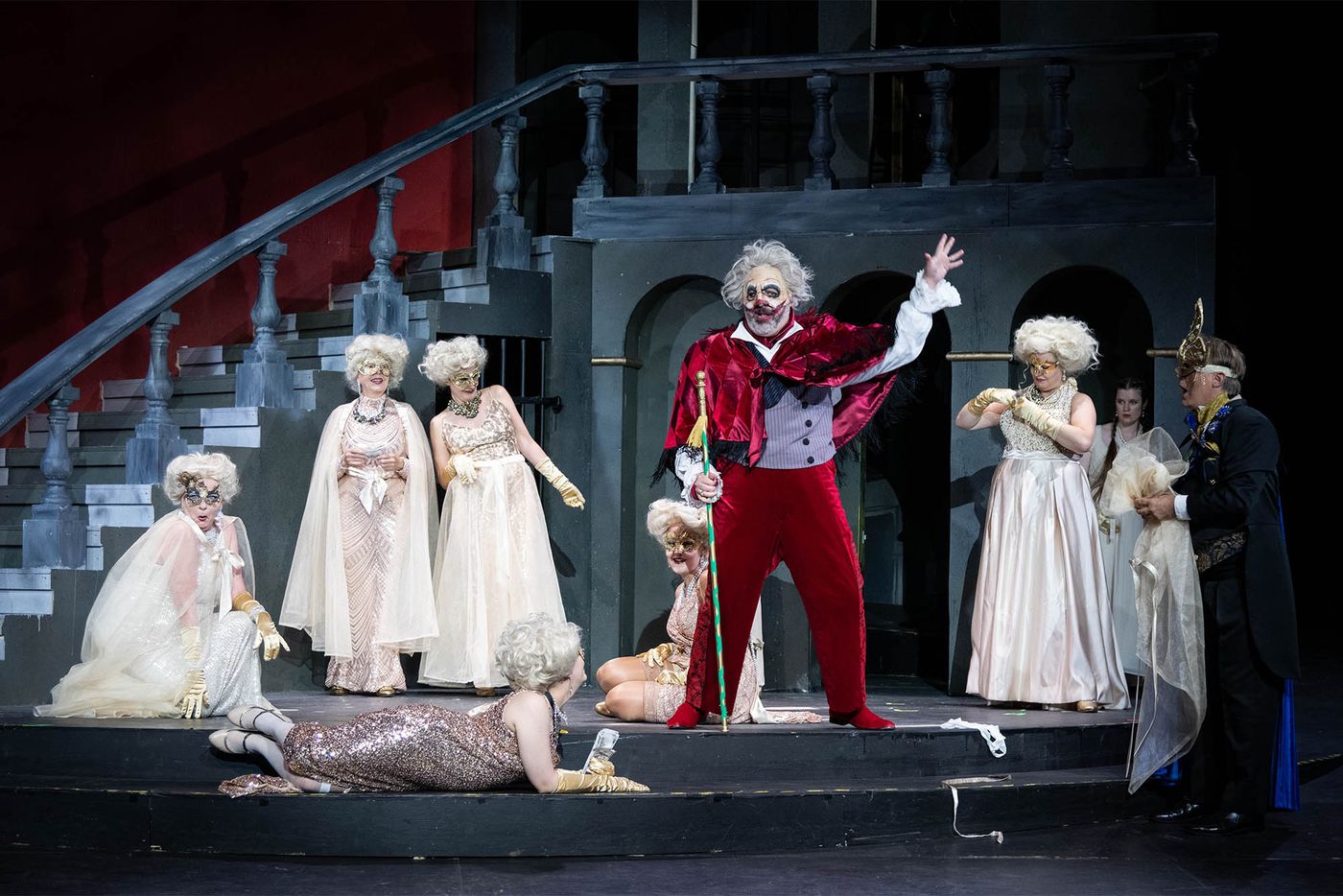Home>Events & Info>Opera>Which Composer Wrote The Opera The Ring Of The Nibelung
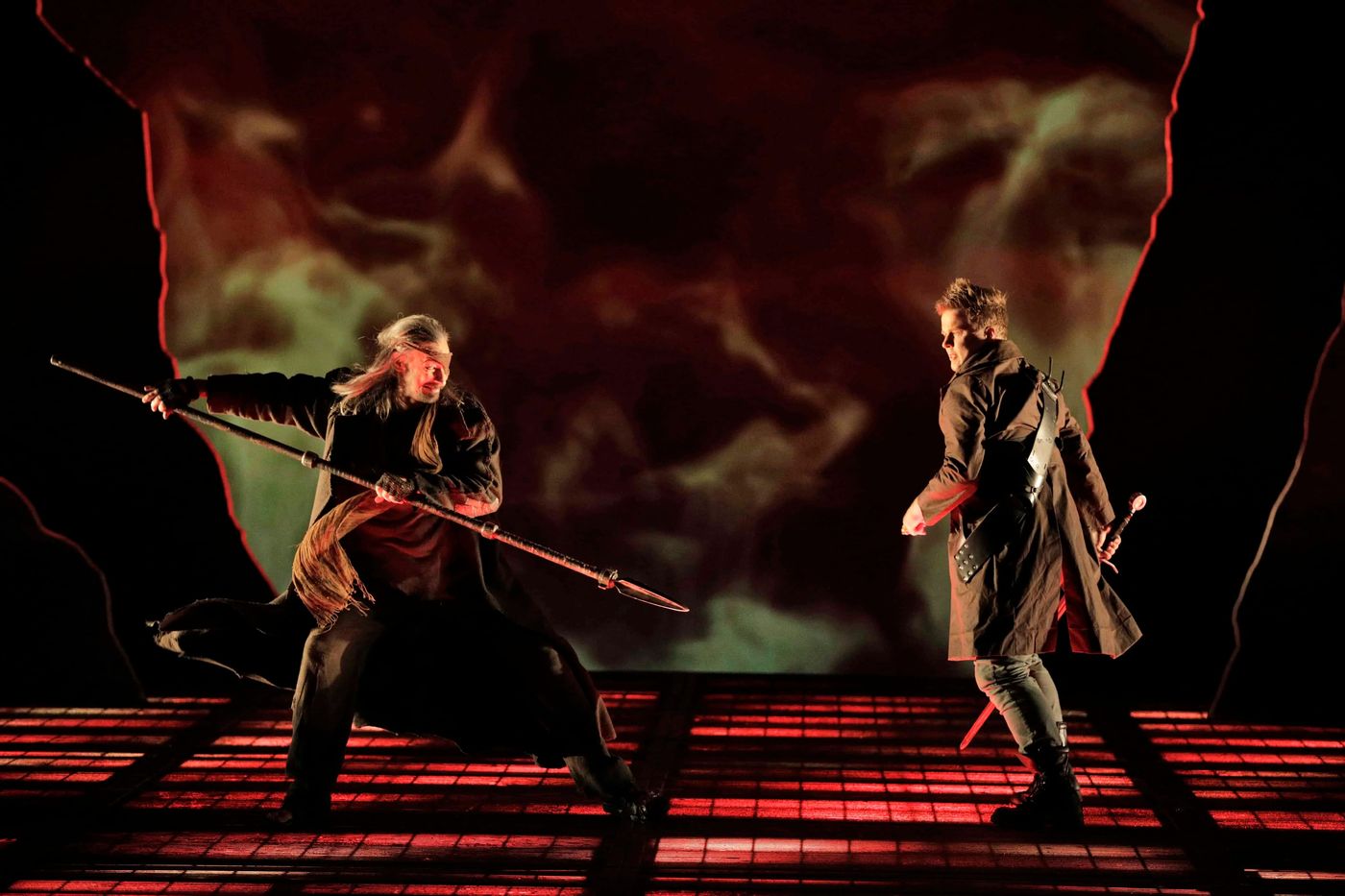

Opera
Which Composer Wrote The Opera The Ring Of The Nibelung
Modified: January 22, 2024
Discover the composer of the epic opera "The Ring of the Nibelung" and delve into the world of this timeless masterpiece. Explore the captivating music and dramatic storytelling of this iconic opera.
(Many of the links in this article redirect to a specific reviewed product. Your purchase of these products through affiliate links helps to generate commission for AudioLover.com, at no extra cost. Learn more)
Table of Contents
Introduction
The Ring of the Nibelung is an epic four-part opera composed by Richard Wagner that stands as a pinnacle of the operatic genre. It is often considered one of the most ambitious and monumental works in the history of music. The opera tells a captivating saga of gods, heroes, and mythical creatures, exploring themes of power, love, greed, and redemption.
Wagner wrote both the libretto and the music for The Ring of the Nibelung, transforming the story from Norse mythology into a grand operatic masterpiece. With its intricate plot, rich characterization, and innovative use of music and stagecraft, The Ring of the Nibelung captivates audiences, transporting them into a vivid world of fantasy and drama.
The Ring cycle consists of four individual parts, or “music dramas,” namely Das Rheingold (The Rhinegold), Die Walküre (The Valkyrie), Siegfried, and Götterdämmerung (Twilight of the Gods). Each part can be performed as a separate opera, but the true impact of the work is felt when all four parts are experienced as a complete cycle.
Throughout The Ring of the Nibelung, Wagner weaves together a complex web of characters and storylines. At the heart of the narrative is the magical Ring, forged from the Rhinegold, which grants its possessor ultimate power. Gods, giants, dwarves, and mortals all become entangled in their pursuit of the Ring, leading to a cataclysmic downfall.
With its grand scale and intense orchestration, The Ring of the Nibelung pushes the boundaries of what is possible in opera. Wagner’s innovative use of leitmotifs, recurring musical themes associated with specific characters, places, or ideas, adds a psychological depth to the storytelling, enhancing the emotional impact of the opera.
The Ring of the Nibelung has resonated with audiences and critics alike ever since its premiere in the mid-19th century. Its themes and motifs continue to inspire and influence contemporary culture, from literature to film and beyond. The profound impact of The Ring of the Nibelung on the world of opera cannot be overstated, solidifying Wagner’s status as one of the greatest composers in history.
In the following sections, we will delve deeper into the story of The Ring of the Nibelung, explore the life of composer Richard Wagner, and uncover the creation, reception, and lasting legacy of this monumental opera cycle.
The Story of The Ring of the Nibelung
The story of The Ring of the Nibelung takes place in a mythological world filled with gods, heroes, and magical creatures. It revolves around the powerful and coveted Ring, crafted from the Rhinegold by the Nibelung dwarf, Alberich.
In the first part of the cycle, Das Rheingold, we witness the theft of the Rhinegold by Alberich, who forges the Ring and gains the ability to rule the world. However, the gods, led by Wotan, are interested in obtaining the Ring for themselves. They trick Alberich and take the Ring from him. As a result, a curse is placed upon the Ring, promising doom and destruction to anyone who possesses it. The Rhinemaidens, guardians of the Rhinegold, lament the loss of their precious treasure.
The second part, Die Walküre, focuses on the story of the heroic twins, Siegmund and Sieglinde. They are separated at a young age but eventually reunite and fall in love. However, their love is forbidden as they are siblings. In a dramatic twist, Wotan intervenes and orchestrates Siegmund’s death, as part of his plan to ensure the destruction of the gods. Sieglinde is left pregnant with Siegfried, the hero who will play a central role in the later parts of the cycle.
The third part, Siegfried, follows the adventures of the eponymous hero. Raised in the wilderness by the dwarf Mime, Siegfried grows up into a fearless warrior. He seeks his true heritage and discovers his destiny as the one who will slay the dragon Fafner and claim the Ring. After defeating the dragon, Siegfried acquires the ability to understand the language of birds. He embarks on a journey to find the sleeping Valkyrie, Brünnhilde, whom he rescues from a magical fire. The two fall in love and pledge their eternal devotion to each other.
The cycle concludes in Götterdämmerung, where the consequences of greed, betrayal, and the curse of the Ring unfold. The story follows the downfall of the gods and the destruction of the world they preside over. Siegfried’s betrayal of his love for Brünnhilde, prompted by a love potion, leads to chaos and tragedy. The Rhinemaidens reclaim the Ring and attempt to destroy it in the Rhine, but not before Brünnhilde sacrifices herself and joins Siegfried in death. The world is engulfed in flames, and the gods meet their demise. The Ring is returned to the Rhine, bringing about a new beginning.
The story of The Ring of the Nibelung is a complex and deeply layered narrative, exploring themes such as the corrupting power of greed, the inevitability of fate, and the redemptive power of love and sacrifice. It is a timeless tale of passion, betrayal, and the eternal struggle between gods and mortals.
Composer Richard Wagner
Richard Wagner, born on May 22, 1813, in Leipzig, Germany, was a visionary composer whose works revolutionized the opera world. He is widely regarded as one of the most influential and controversial figures in Western classical music.
Wagner’s musical career was marked by a relentless pursuit of innovation and a desire to create a unifying form of art that combined music, drama, and visual spectacle. His theories and writings on opera, particularly his concept of “Gesamtkunstwerk,” or “total artwork,” greatly impacted the development of music and theater.
Wagner’s early compositions showed influences from German Romanticism, particularly the works of Beethoven and Weber. However, it was with The Ring of the Nibelung that he solidified his status as a visionary composer. The epic scale and revolutionary musical techniques employed in The Ring showcased Wagner’s mastery of orchestration and his ability to convey the depths of human emotion.
Throughout his career, Wagner faced numerous financial and personal struggles. He often relied on the support of patrons and found himself in debt. His personal life was marked by scandal, including multiple marriages and affairs.
Despite the controversies surrounding Wagner’s personal life and political views, his musical genius cannot be denied. His compositions, including The Ring of the Nibelung, Tristan und Isolde, and Die Meistersinger von Nürnberg, pushed the boundaries of harmony, melody, and form.
Wagner’s use of leitmotifs, a technique where musical themes are associated with specific characters, objects, or ideas, revolutionized the way music could convey meaning and enhance storytelling. He created a highly expressive and immersive musical language that resonated with audiences and continues to captivate listeners to this day.
Wagner’s influence extends far beyond the world of opera. His ideas and musical innovations paved the way for future composers, such as Gustav Mahler and Richard Strauss. His legacy can be seen in the operatic works of composers like Puccini, Strauss, and Debussy.
Richard Wagner’s impact on music and culture is immeasurable. His groundbreaking approach to composition and his enduring masterpieces, including The Ring of the Nibelung, have secured his place in history as one of the greatest composers of all time.
The Creation of The Ring of the Nibelung
The creation of The Ring of the Nibelung was a monumental undertaking that consumed Richard Wagner’s creative energy for over 25 years. From the conception of the story to the completion of the music, Wagner poured his heart and soul into this epic opera cycle.
The idea for The Ring originated from Wagner’s fascination with Norse mythology and legends. Inspired by the ancient sagas and the mythical tales of gods, heroes, and supernatural beings, he embarked on a journey to craft a monumental work that would explore the depths of human experience.
Wagner wrote both the libretto (the text and lyrics) and the music for The Ring. This allowed him complete control over the artistic vision and ensured a seamless integration between the words and music. The process involved meticulous attention to detail, intricate plotting, and the creation of a range of memorable characters.
The composition of The Ring was a complex and time-consuming task. Wagner developed the leitmotif technique to weave together the various themes, characters, and ideas in the opera. These recurring musical motifs provided a unique musical language, allowing the audience to follow the intricate narrative and comprehend the underlying emotions and motivations of the characters.
Wagner faced numerous challenges during the creation of The Ring. Financial difficulties and a lack of support forced him to pause and resume work on the opera several times. He even had to build his own opera house, the Bayreuth Festspielhaus, to stage the complete cycle as he envisioned it.
The premiere of The Ring of the Nibelung took place in August 1876, at the inaugural Bayreuth Festival. The festival was specifically organized to showcase Wagner’s works, and The Ring was the centerpiece of the event. The production was a monumental achievement, featuring innovative stage designs, elaborate costumes, and a world-class orchestra.
The reception of The Ring was mixed. Some critics and audiences were enthralled by Wagner’s audacious vision and the emotional intensity of the music, while others found the opera overwhelming and unconventional. Nevertheless, The Ring garnered attention and sparked discussions about the future of opera and the boundaries of the art form.
Today, The Ring of the Nibelung continues to be one of the most revered and performed works in the operatic repertoire. Its timeless themes and groundbreaking musical techniques have captivated generations of audiences, invigorating the world of opera and pushing the boundaries of what is possible in stagecraft.
The creation of The Ring of the Nibelung stands as a testament to Richard Wagner’s artistic genius and unwavering commitment to his vision. It is a testament to the power of artistic obsession and the ability of music to transport us into the realms of mythology, emotion, and human experience.
The Reception and Legacy of The Ring of the Nibelung
When The Ring of the Nibelung premiered, it elicited both awe and controversy. The sheer scale and ambition of Wagner’s opera captivated some audiences, while others found it overwhelming or difficult to comprehend. Nevertheless, over time, The Ring solidified its place as a cornerstone of the operatic repertoire and left an indelible impact on the world of music and theater.
One of the notable aspects of The Ring’s reception is the cult of devotion that developed around Wagner and his opera cycle. Admirers of his work, known as “Wagnerites,” formed a dedicated following, attending multiple performances of The Ring and engaging in intellectual discussions about its symbolism and deeper meanings.
Wagner’s use of leitmotifs, innovative orchestration, and his bold integration of music and drama were highly influential. Composers such as Gustav Mahler and Richard Strauss were inspired by Wagner’s approach and incorporated similar techniques into their own works.
The cultural impact of The Ring extended beyond the world of opera. Its themes and characters have influenced literature, visual arts, and film. The epic struggle for power, the destructive force of greed, and the themes of love and sacrifice have resonated with audiences and continue to be explored in various artistic mediums.
Wagner’s Bayreuth Festival, established specifically to present The Ring of the Nibelung and his other works, became a cultural institution that has endured to this day. It continues to attract opera enthusiasts from around the world, who gather in the Bayreuth Festspielhaus to experience the grandeur and emotional intensity of The Ring.
The Ring of the Nibelung’s enduring popularity can also be attributed to its universal themes and timeless relevance. Its exploration of power, corruption, and the struggle for redemption resonates with audiences in different historical and cultural contexts. The deep emotional impact of the music and the profound questions raised by the opera continue to captivate and challenge listeners.
The Ring of the Nibelung’s legacy can be felt in countless music festivals, productions, and recordings worldwide. Opera companies often stage The Ring as a pinnacle of their repertoire, showcasing the technical and artistic prowess of their performers.
In recent years, innovative productions of The Ring have emerged, utilizing modern technology, creative stage designs, and diverse interpretations. These productions breathe new life into the opera cycle, captivating new audiences while staying true to Wagner’s fundamental vision.
Despite its controversy and challenges, The Ring of the Nibelung remains a testament to Wagner’s artistic genius and ambition. Its enduring legacy as one of the greatest achievements in the history of opera is a testament to its power to provoke and inspire audiences across generations.
Conclusion
The Ring of the Nibelung is a monumental and transformative work of opera that has left an enduring impact on the world of music and theater. Richard Wagner’s visionary composition, combining music, drama, and mythological storytelling, elevated the art form to new heights.
From its inception, The Ring captivated audiences with its grand scale and intricate narrative. The story of gods, heroes, and mythical creatures, driven by themes of power, love, and redemption, resonated deeply with audiences from its premiere in the late 19th century to the present day.
Wagner’s groundbreaking use of leitmotifs, recurring musical themes associated with specific characters and ideas, added depth and emotion to the storytelling. The Ring’s complex and layered music, along with its lavish stage productions, continue to captivate and inspire performers, directors, and audiences alike.
The creation of The Ring of the Nibelung was a colossal endeavor that spanned decades of Wagner’s life. Amid financial struggles and personal controversies, Wagner’s unwavering dedication and artistic vision brought about an opera cycle that transcends time and cultural boundaries.
Though The Ring initially faced mixed reviews and considerable criticism, it has become an integral part of the operatic canon. Its profound influence on subsequent composers and artists is evident in the countless productions and adaptations that continue to be staged worldwide.
The Ring’s legacy extends far beyond the world of opera. Its themes of power, greed, and self-destruction continue to resonate, making it a timeless exploration of the human condition. Its impact on literature, visual arts, and film is a testament to its relevance and universal appeal.
Today, The Ring of the Nibelung stands as a pinnacle of the operatic repertoire, captivating audiences with its epic scale, emotional depth, and innovative musical language. From Wagner’s visionary composition to the enduring devotion of its enthusiasts, the legacy of The Ring continues to enrich the world of music and theater.
As audiences immerse themselves in the mythical realms of gods and heroes, experiencing the triumphs and tragedies of The Ring of the Nibelung, the opera’s power to move, provoke thought, and inspire remains undiminished. It stands as a testament to the boundless possibilities of artistic expression and the enduring legacy of one of history’s greatest composers.



